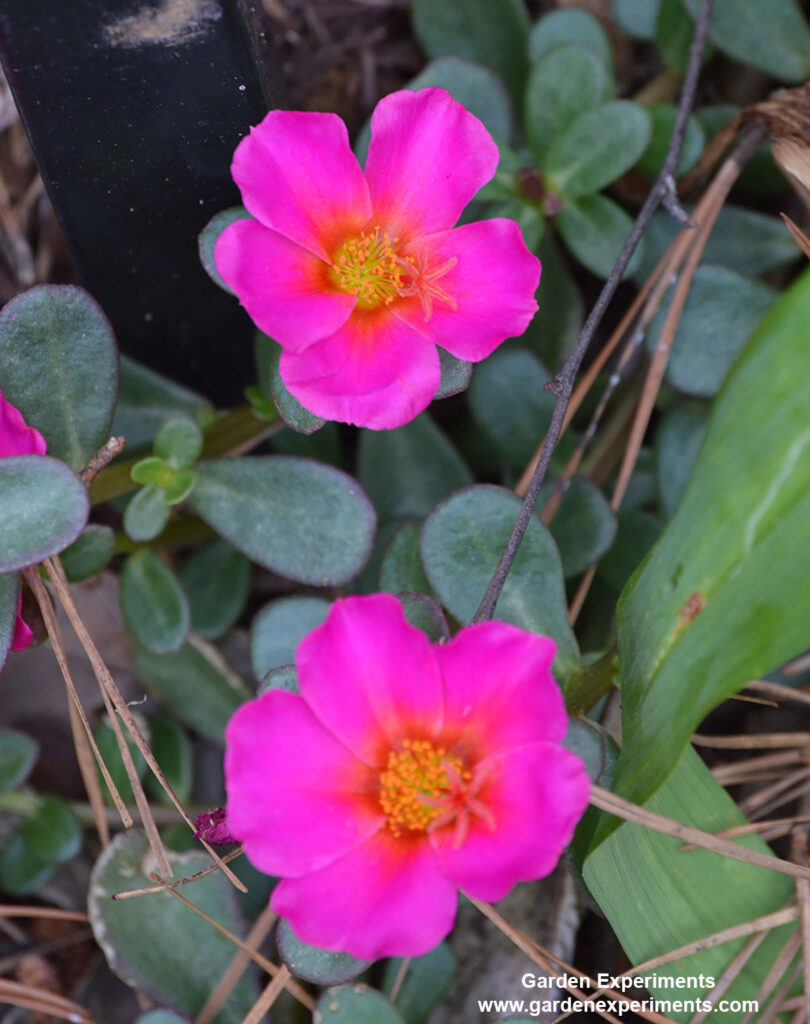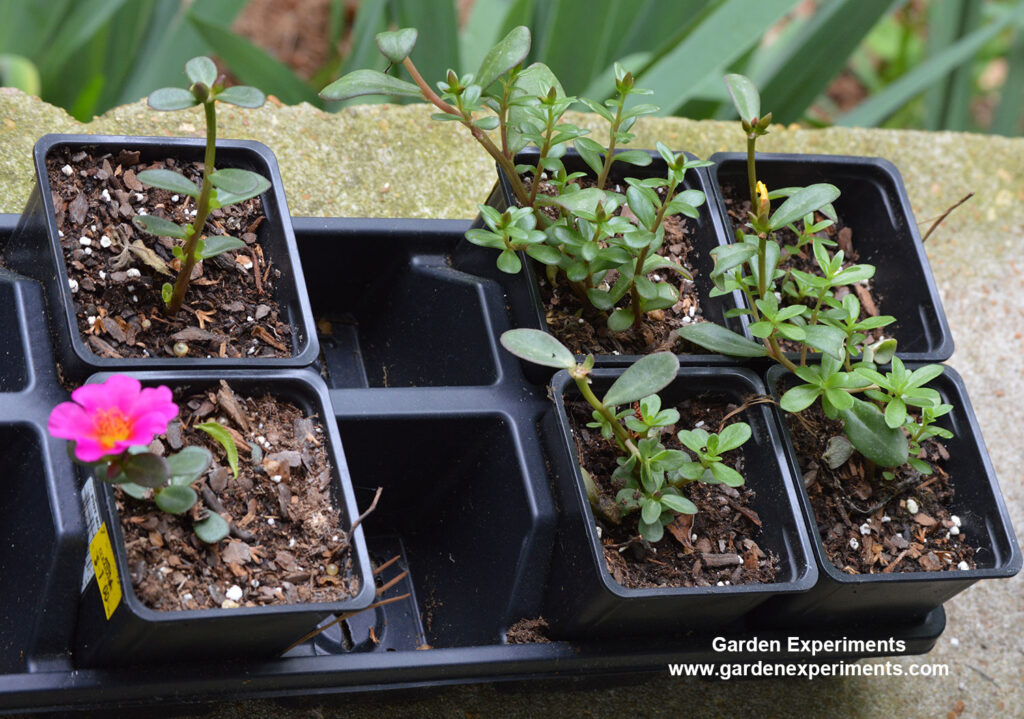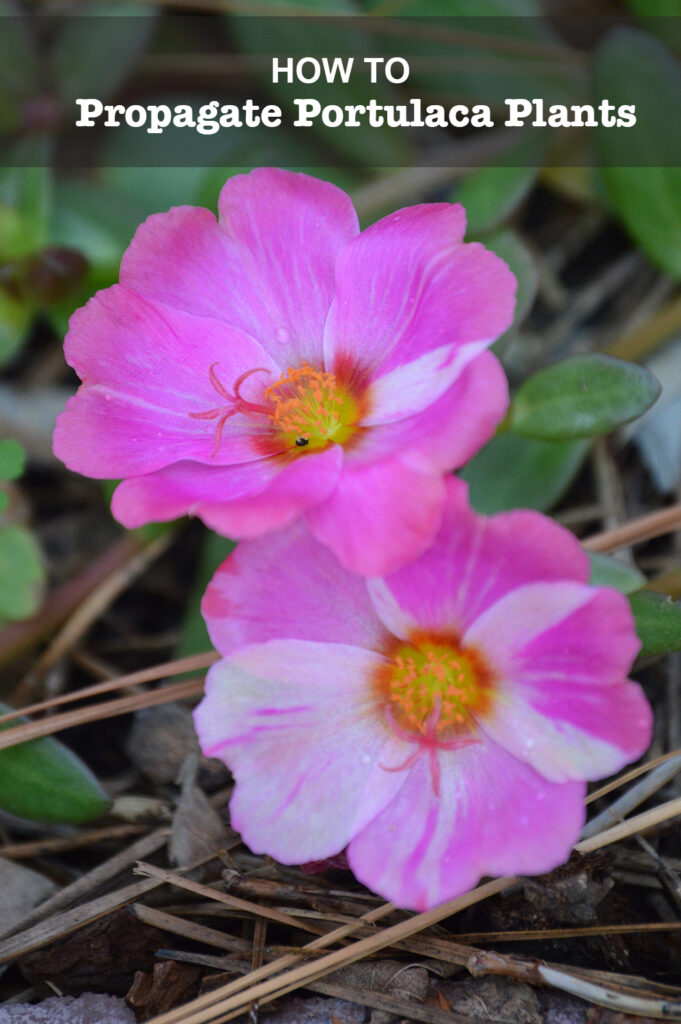
Portulaca is the easiest genus of plants to propagate. You can start with just one plant and end up with four more with just a bit of extra care. It’s so simple!
Portulaca is also known as purslane or moss rose. It grows in full sun, can handle high heat, and is drought tolerant. It grows quickly and produces many bright, colorful flowers. The flowers come in yellow, red, orange, pink, red, and even white.
It will bloom all summer and even in to fall. It is an annual, though, which means it will not overwinter and come back the following year. But it may reseed itself and show up in unexpected places.
The leaves are fleshy. They always remind me of succulent leaves, which may be why they root so easily.
Really the only problem I have found with this plant is that deer seem to think it is tasty. But the deer only start to really nibble on it in late summer to early fall – so I’ve had plenty of blooms before then.
How To Propagate Portulaca Plants
Here’s how you propagate your portulaca plant – first get your good garden shears and trim off a piece of the plant. The piece should be a few inches long, but not much longer than 3 inches. Remove the leaves from the bottom inch of the cutting and place the bottom in potting soil in a small pot.

Keep the cutting moist for a few days and then water it as needed. Don’t allow the soil to dry out. Let it grow new roots for a week or two and then transplant it to your flower bed. Keep the soil around the transplanted plant moist for a few days to ensure it can get a foothold.
That’s it! I told you it was easy!
Take Care with Pets Around Portulaca
The ASPCA lists Portulaca oleracea as toxic to dogs, cats and horses. So be careful with your pets around these plants.

